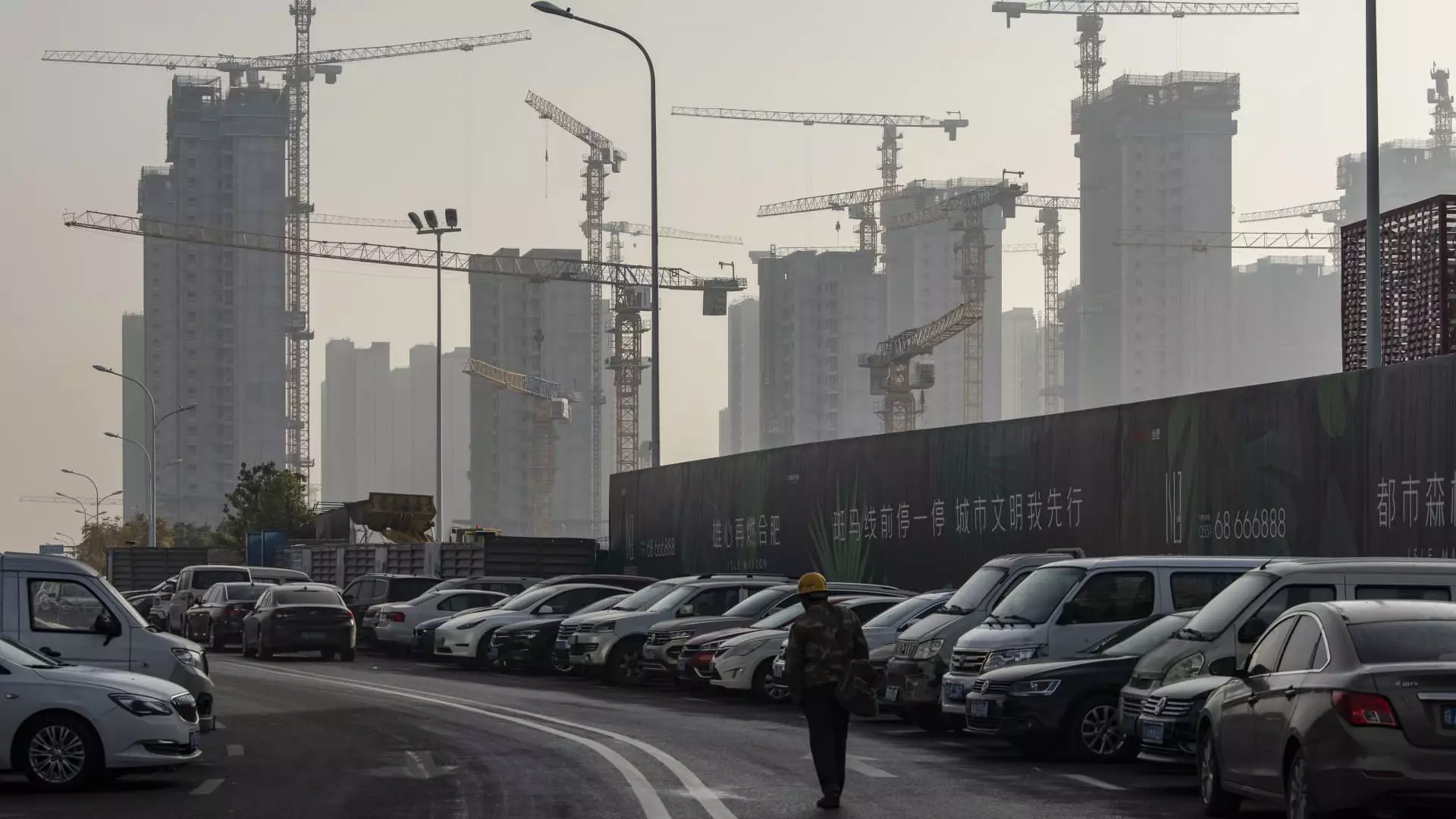The real estate sector in China has recently found itself at the crossroads of significant challenges and uncertain recovery prospects. Several research firms have weighed in on the current situation, suggesting that the industry may not begin to stabilize until the latter half of 2025, despite the government’s recent stimulus measures. This precarious landscape has prompted a thorough examination of the underlying factors driving the current malaise, the measures being taken to remedy it, and the broader implications for the economy.
The Chinese real estate market has been under severe strain, with multiple factors contributing to its turmoil. High levels of debt among property developers have rendered many unable to fulfill contractual obligations by delivering pre-sold homes. This breach has drastically affected consumer sentiment, further complicating any potential recovery. The economic ramifications of this crisis are significant, given that real estate once constituted over a quarter of the nation’s gross domestic product (GDP). As household wealth is intricately tied to property values, any decline in this sector has direct consequences on both consumer spending and local government finances.
As critical stakeholders, the government has asserted that its priority remains the advancement of manufacturing as a new growth engine, which complicates immediate interventions for the beleaguered real estate sector. Observations suggest that policy measures may be lagging behind the urgent need for action, raising concerns about whether the current interventions are adequate to prompt a turnaround.
In an effort to reverse the downward trend, Chinese President Xi Jinping convened a high-level meeting in September to map out strategies aimed at stabilizing the real estate sector. Since then, the Finance Ministry has rolled out a series of measures that officials have described as comprehensive and coordinated. Analysts from Goldman Sachs have indicated that these new strategies represent a departure from earlier, more fragmented efforts to address the crisis. Their projections suggest that while the downward spiral is set to halt, the uphill climb toward recovery is still two years away.
Goldman Sachs believes that for the real estate market to see any significant levelling off or growth, additional financial stimulus of approximately 8 trillion yuan (around $1.12 trillion) will be necessary. Without this support, the existing downturn could endure for at least another three years. The suggested measures include increasing liquidity for developers, reducing unsold inventory, and expediting the delivery of homes that have already been pre-sold.
This situation is underscored by the disturbing statistic that approximately 20 million homes remain unfinished, a stark reminder of the housing market’s over-reliance on pre-sales as a financing mechanism. This over-leveraging has been exacerbated by a governmental crackdown on debt, which has further fueled apprehension among potential buyers.
Despite the gloomy outlook, there are micro-indicators that suggest the real estate market may be gradually stabilizing. Recent data shows that property sales in major cities have contracted by around 4% year-on-year in October, a significant improvement compared to the steep declines of over 25% seen in September. While this suggests a slight rebound, it is crucial to clarify that stabilization does not equate to recovery.
Expert opinions from S&P Global Ratings forecast that property sales will likely drop significantly, potentially reaching levels lower than half of what was observed in 2021. The pressure of unsold inventories continues to weigh heavily on developers, forcing them into price-cutting strategies to lure reluctant buyers. Downturns in construction activity and declines in sales are consequential, impacting developers’ liquidity and fueling broader economic anxieties.
Analysts express a cautious optimism regarding the long-term prospects of the real estate market. The current series of measures may create a foundation for stabilization, but without sustained intervention, the possibility of further declines remains. Goldman Sachs analysts have indicated that shortcomings in policy execution could lead to significant price declines in the range of 20% to 25%.
Moreover, the government’s pledge of 300 billion yuan for loans designated for acquiring unsold homes hints at an understanding of the depth of the issue; however, skeptics point out that this allocation represents a mere fraction of the total demand for completed housing. The overall consensus is that while efforts are underway to rectify the situation, the path to recovery will be a protracted one requiring strategic foresight, effective policy implementation, and perhaps a change in consumer sentiment.
China’s real estate market is undergoing a critical phase characterized by struggles and sporadic signs of recovery. The road ahead remains fraught with challenges, and while government intervention provides hope, long-term stabilization will necessitate a multifaceted approach that actively addresses the root problems that have led to this crisis.

